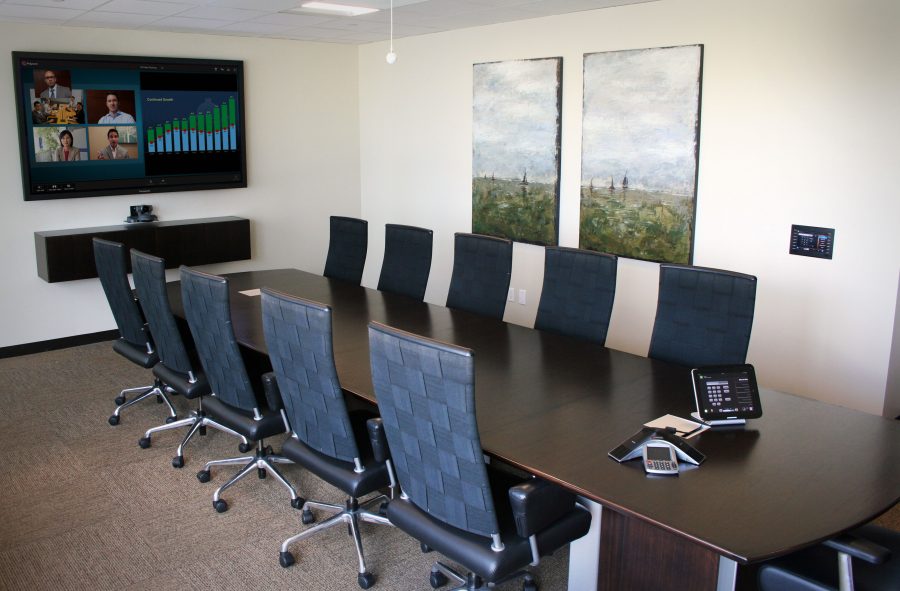Should AV design and installation be handled by the same integrator?
AV solutions are more complex than ever, so it is essential that AV design and installation go hand in hand. Ideally, a single integrator would perform every step of the job, including both design and installation. This is the only way to guarantee a cohesive solution. The AV industry has evolved quickly, and new solutions continue to be developed. The rise of AV over IP and the increased demand for seamless, inter-compatible system components has challenged AV professionals to learn more and work together more efficiently. Without tight collaboration between the design and installation teams, the project’s outcome may not meet the client’s expectations.What is the difference between an AV designer and an AV installer?
Although many AV professionals are capable of both design and installation, their duties do not overlap much. AV designers are usually one of the first team members to interface with the client. It is the designer’s job to understand the client’s needs, and these are translated into workable solutions. A designer will help determine which technologies are needed and how those components should be placed to ensure the ideal solution. The installer is the professional responsible for mounting the equipment and running all necessary cabling to the system, performing the physical part of the job. Reputable AV integrators staff professionals who are trained in both areas, as this training enables the professional to take a big picture view of the AV solution, even if they are only installing equipment.Why do AV design and installation teams need to collaborate so closely?
Every AV solution involves several steps, and though some AV professionals can serve in more than one role, designers and installers once worked independently. Reputable integrators no longer have their designers and installers operate on separate islands, however. This approach makes it nearly impossible to bring all of the system’s components together into a cohesive whole, and problems often present when designers and installers haven’t communicated with each other. Here are some reasons an AV integrator should involve designers and installers during every stage of the integration process:1. Any potential obstacles are identified and worked around – When AV designers map out the project, they do it room by room, and determine exactly where systems components are going. If the designer doesn’t communicate with other teams, though, the installer may be given an impossible task. This is particularly true when the system is going into new construction. There are so many teams involved in a new construction project that constant communication is required to remain up to date on any changes.
Every system component requires power, and most require conduit, cooling and networking. That’s a lot of infrastructure to take into account, and installers are responsible for ensuring it is delivered to the equipment.
If designers and installers are talking to each other as a team, they can spot potential issues in delivering power and other essentials to the equipment. If changes do need to be made, the design and installation teams make them together, ensuring the fix is a workable one.
2. Accounts for future additions – AV solutions can provide years of reliable performance, but upgrades or replacements will eventually be required. This is true of any system, no matter how advanced the technology is when it is installed.
If the integrator’s design and installation teams are working together, they can consult with each other regarding the client’s future needs. If, for example, the client wants to eventually install a video wall, but is settling for individual displays in the present, the designers and installers will need to discuss how to best anticipate that transition. Maybe the video wall can occupy the same space as the displays, reducing future installation work. Perhaps the displays can be mounted to a cart instead of the wall, to reduce installation work in the present. These are the kind of challenges that can only be fully resolved with designers and installers working together closely.
3. Confirms the project’s schedule – By the time installers are involved, the project’s timeline and relevant milestones have been decided on. If, though, the design is too ambitious or poses too many obstacles, the installers may be pressed for time.
When the integrator’s installers are involved from the beginning, they can help the designers lay out a system that fits into the project’s timeline. The designers don’t have to readdress their work, and installers don’t have to rush through their jobs.
4. Guarantees all regulations and standards are followed – AV technology must be installed in a way that meets ADA and ABA regulations. Further, many businesses and schools have their own AV standards in place that must also be observed.
Even a minor deviation from these standards and regulations is unacceptable, so installers and designers must be aware of then and meet those standards.
An experienced AV integrator will rarely have problems with regulations or standards, but if the installers are involved during the design process, they can point out any potential regulatory issues and avoid mistakes.
AV designers and installers are heavily involved in the system’s implementation and should be the primary authorities on how it’s developed. This is the reason designers and installers should work together, as this will ensure an efficient, compliant solution.


